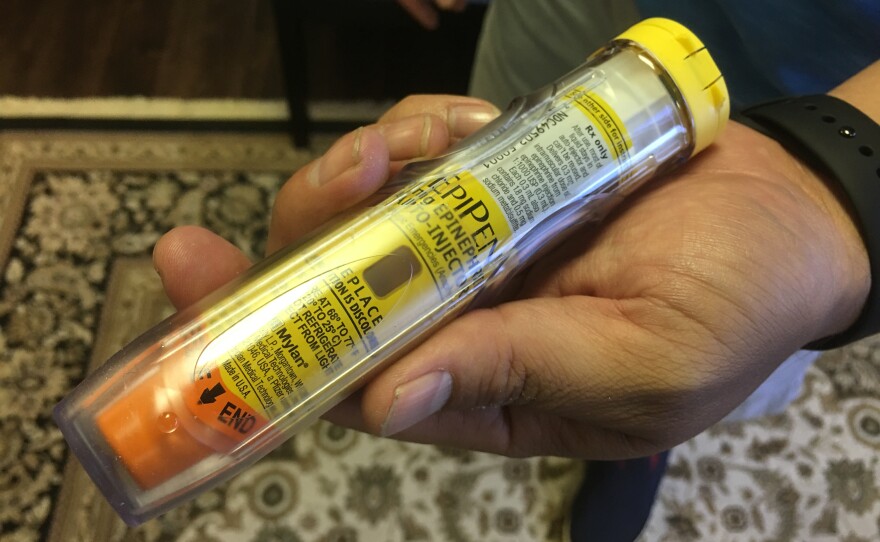According to the group Food Allergy Research and Education, almost 6 million American children have some sort of food allergy. It can be stressful and frustrating to keep children away from foods that can trigger problems. Some parents are embracing an emerging therapy that’s designed to create food tolerance.
Nathan Cervantes, age 7, of San Antonio has the face of a cherub accented by a mischievous smile. He’s like every other third grader, except that he has severe food allergies to eggs and all kinds of nuts. Eating them sends Nathan’s immune system into overdrive and puts him at risk of an anaphylactic or allergic reaction.
His parents have made sure there’s an EpiPen at arm’s length since he was a toddler. His father, Daniel Cervantes, says he can’t be with Nathan 24/7 and other people don’t necessarily serve food with his child’s allergies in mind.

"Being somewhere where somebody’s baked cookies, you don’t know what ingredients they’ve used," explained Daniel Cervantes. "And so it is difficult. It’s something that you’re always worried about."
"Nathan is doing cashew, macadamia nut, and walnut," said Stacy Silvers, MD, with Texan Allergy in Austin. He’s treating Nathan with Oral Immunotherapy (OIT). OIT is the process of giving food allergy patients small, then increasingly larger amounts of their food trigger, creating a kind of desensitization.
"It’s a way to get kids that are allergic to foods to be able to tolerate these foods without allergic reactions," Silvers sad. "There are not many allergists that do it, but the interest is growing." A recent study in the Journal of Allergy and Clinical Immunology showed the therapy was safe and effective for peanut-allergic preschoolers.
In Nathan’s case, his parents bring him to the allergist’s office every week or two. He starts by eating just a few micrograms of nuts.
After 45 minutes, the doctor checks his vitals. Nathan stays on that dose for a couple of weeks, and then moves up to larger amounts over six to twelve months until his body doesn’t create the hives, swelling, coughing and wheezing that can accompany a food allergy.

"We’re still learning more and more about this," Silvers remarked. "But we know that it does work and it does change patients’ lives."
Silvers says he’s helped hundreds of young patients this way, with a success rate of more than 80 percent. One catch: the children have to keep eating a small amount of the food they’re allergic to each day to stay desensitized.
Nathan’s father said it has been worth it for his son. "It’s like any parent, you know, we want to give our children the world, by being able to open him up by being able to just not have to deal with this the rest of his life," Cervantes commented.
Silvers says OIT is not for everyone. Some people are fine just avoiding certain foods. But Nathan says he’s ready to stop having to think so hard about what he eats. "They’re helping me so then once I’m done with it and I’m fine, then I can eat anything I want," Nathan said, adding "that would be awesome."
Since oral immunotherapy uses food as treatment, it’s not a therapy that has earned FDA approval. It’s simply a protocol using the allergic trigger. Silvers emphasized no one should not try this on thjeir own. OIT should be performed under the clinical supervision of a medical professional who knows about dosing and could intervene if a child has a bad reaction.








